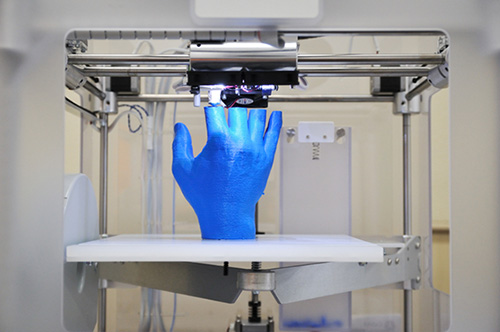- makeITcircular 2024 content launched – Part of Maker Faire Rome 2024Posted 2 weeks ago
- Application For Maker Faire Rome 2024: Deadline June 20thPosted 2 months ago
- Building a 3D Digital Clock with ArduinoPosted 7 months ago
- Creating a controller for Minecraft with realistic body movements using ArduinoPosted 7 months ago
- Snowflake with ArduinoPosted 8 months ago
- Holographic Christmas TreePosted 8 months ago
- Segstick: Build Your Own Self-Balancing Vehicle in Just 2 Days with ArduinoPosted 8 months ago
- ZSWatch: An Open-Source Smartwatch Project Based on the Zephyr Operating SystemPosted 9 months ago
- What is IoT and which devices to usePosted 9 months ago
- Maker Faire Rome Unveils Thrilling “Padel Smash Future” Pavilion for Sports EnthusiastsPosted 10 months ago
3D Printed Medical Devices Market up to 17.7% of CAGR in 2026.

Future Market Insights presents a 10-year forecast for the global 3D printed medical devices market between 2016 and 2026 in a new publication titled “3D Printed Medical Devices Market: Global Industry Analysis and Opportunity Assessment, 2016 – 2026”.
The global 3D printed medical devices market was estimated to be US$ 238 Mn in 2015 and it is expected to reach US$ 279.6 Mn in 2016, witnessing a year-on-year growth of 17.5%. This kind of market is anticipated to grow at a CAGR of 17.7% during the forecast period and is projected to be valued at US$ 1469.4 million by the end of 2026.
According to Future Market Insights analysts, the increasing geriatric population across the globe leads to an increasing risk of diabetes-related gangrene cases, peripheral vascular disease and osteoarthritis among elderly individuals. In addition, factors such as rising awareness regarding personal care, increasing prevalence of chronic diseases. Also the increasing incidence of accidents because of use of fast moving machinery requires an increasing number of dental implants and cranio-maxillofacial implants. All these reasons contribute to the growth of the global 3D printed medical devices market over the forecast period.
However, size of the printer limits the size of the product and thus, it is a challenging job to produce parts of large industrial machines. Moreover, a key limiting factor in the adoption of 3D printing are technical barriers. These are complex equipment and so most of the 3D printing manufacturers are utilising open source technology. As adjusting equipment and printing parameters are time consuming processes, users lose interest in learning or knowing to operate such devices.
In terms of revenue share, we can analyze the market forecast by considering the following segments:
- Material: the plastics segment is expected to account for 72.0% market share of the global 3D printed medical devices market in 2016 and is expected to register the highest CAGR of 20.1 % during the forecast period. Usage of other materials for 3D printing results in high operational costs and is time consuming.
- Application: the orthopaedic implants application segment is expected to dominate throughout the forecast period, reflecting a CAGR of 19.9% over the forecast period.
- Technology: despite the SLS technology domination in 2015, the polyJet / inkJet 3D printing segment is expected to dominate throughout the forecast period, registering a steady CAGR.
- Distribution Channel: as expected the hospital segment is anticipated to remain the dominant segment during the forecast period.
- Region: sales of 3D printed medical devices are relatively healthy in the U.S. market in recent years, making North America the most lucrative market globally. It is expected to register a CAGR of 19.2% over the forecast period. Western Europe is expected to be the second fastest growing market registering a CAGR of 18.5% over the forecast period followed by Eastern Europe, APEJ, and Japan.















